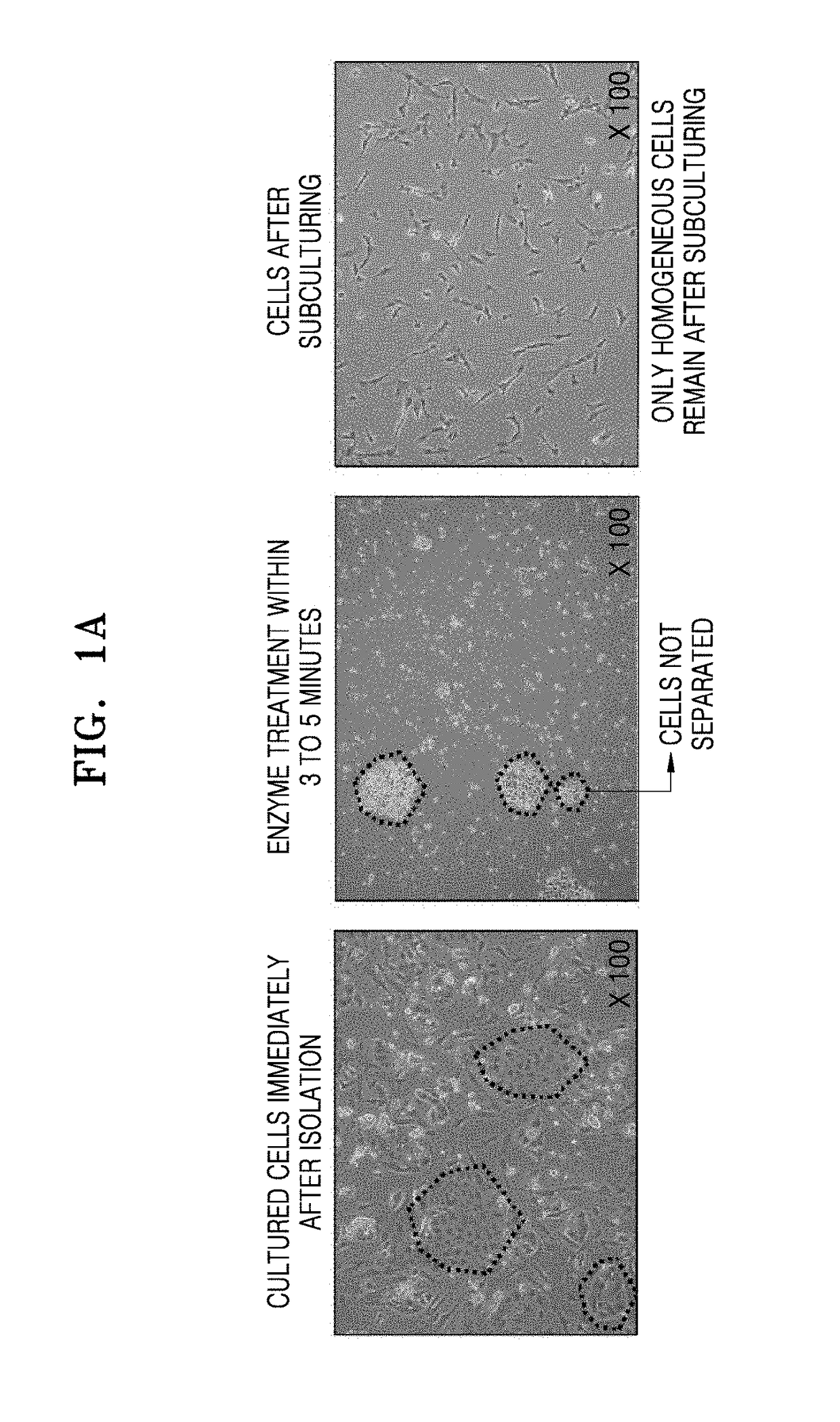Improved postnatal adherent cells and preparation method therefor
a technology of adherent cells and adherent cells, which is applied in the field of enhanced postnatal adherent cells, can solve the problems of low separation efficiency of mesenchymal stem cells, possible mixing of mononuclear cells present in the placenta, and pain of donors, and achieves high differentiation capacity, yield, and proliferation rate of adherent cells. , the effect of improving the ability to migra
- Summary
- Abstract
- Description
- Claims
- Application Information
AI Technical Summary
Benefits of technology
Problems solved by technology
Method used
Image
Examples
example 1
Preparing Enhanced Postnatal Adherent Cells
[0049]1. Isolation of Adherent Cells from Amniotic Tissue of Placenta and Culture Thereof
[0050]After an informed consent form was signed by a healthy woman who had normally delivered, a chorionic plate membrane was pulled and peeled off from a placental tissue collected during normal placenta delivery. The removed chorionic plate membrane was washed with Ca / Mg free DPBS containing gentamicin twice or five times to remove blood, and then a chorionic plate was scraped and removed by using a slide glass. The remaining amnion was divided into pieces as small as possible using surgical scissors such that the pieces was in a size of about 1 mm to about 5 mm, and 20 ml of an enzyme reaction solution (enzyme mixture) was added to the small tissue pieces and allowed to react in a shaking incubator at 37° C. and 200 rpm for 15 minutes. To inactivate the enzyme reaction solution, 2 ml of FBS was added at a ratio of 1:10, and the reaction solution was ...
example 2
and Quantification Analysis of Secretory Proteins of Enhanced Postnatal Adherent Cells
[0076]1. Profiling of Secretory Proteins
[0077]Profiling of secretory proteins was performed in order to analyze secretory proteins of the adherent cells prepared in 1 of Example 1.
[0078]In detail, the cultured adherent cells were allowed to secrete secretory proteins in serum-free MEM alpha GlutaMAX (Invitrogen), and secretory proteins were concentrated at a concentration of 1 mg / ml. The concentrate was used to analyze proteins secreted by the adherent cells by using a human antibody array (Raybio) capable of analyzing 504 kinds of secretory proteins.
[0079]As a result, as shown in the following Table 3, a total of 48 kinds of proteins were found to be secreted.
TABLE 3RatingCytokine1Thrombospondin (TSP)2EDA-A23IGFBP-rp1 / IGFBP-74Thrombospondin-15MMP-16HGF7IL-88sgp1309WIF-110IL-611TIMP-212GRO13Latent TGF-beta bp114GDF-1515sFRP-416IL-1917Kremen-218TGF-beta RIII19M-CSF20MSP alpha Chain21MIP 222TNF RI / TN...
PUM
| Property | Measurement | Unit |
|---|---|---|
| concentration | aaaaa | aaaaa |
| concentration | aaaaa | aaaaa |
| concentration | aaaaa | aaaaa |
Abstract
Description
Claims
Application Information
 Login to View More
Login to View More - R&D
- Intellectual Property
- Life Sciences
- Materials
- Tech Scout
- Unparalleled Data Quality
- Higher Quality Content
- 60% Fewer Hallucinations
Browse by: Latest US Patents, China's latest patents, Technical Efficacy Thesaurus, Application Domain, Technology Topic, Popular Technical Reports.
© 2025 PatSnap. All rights reserved.Legal|Privacy policy|Modern Slavery Act Transparency Statement|Sitemap|About US| Contact US: help@patsnap.com



